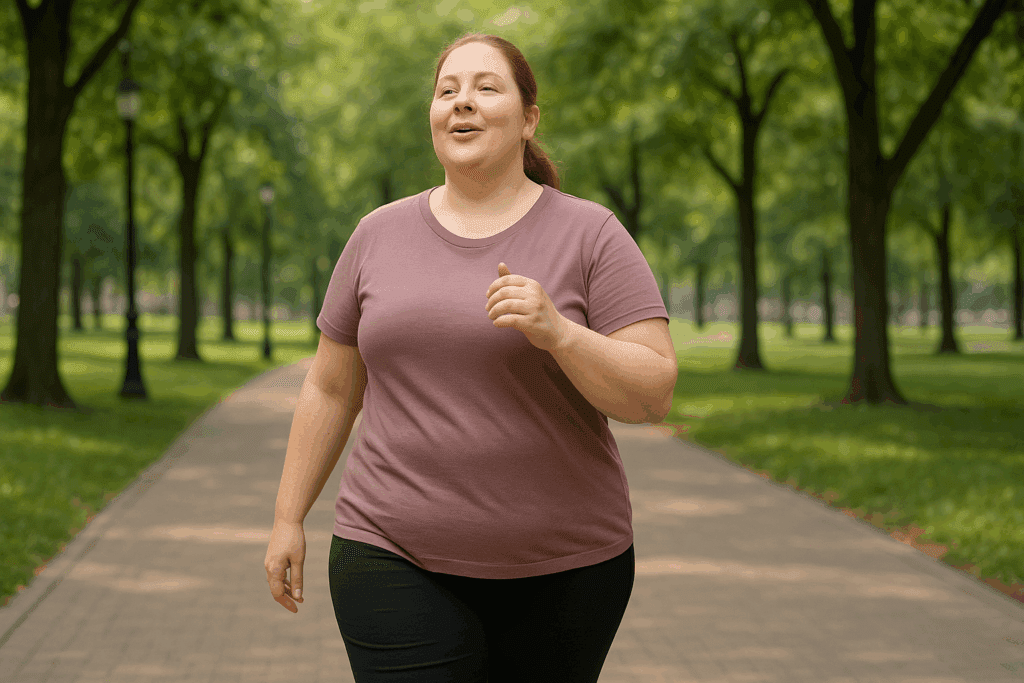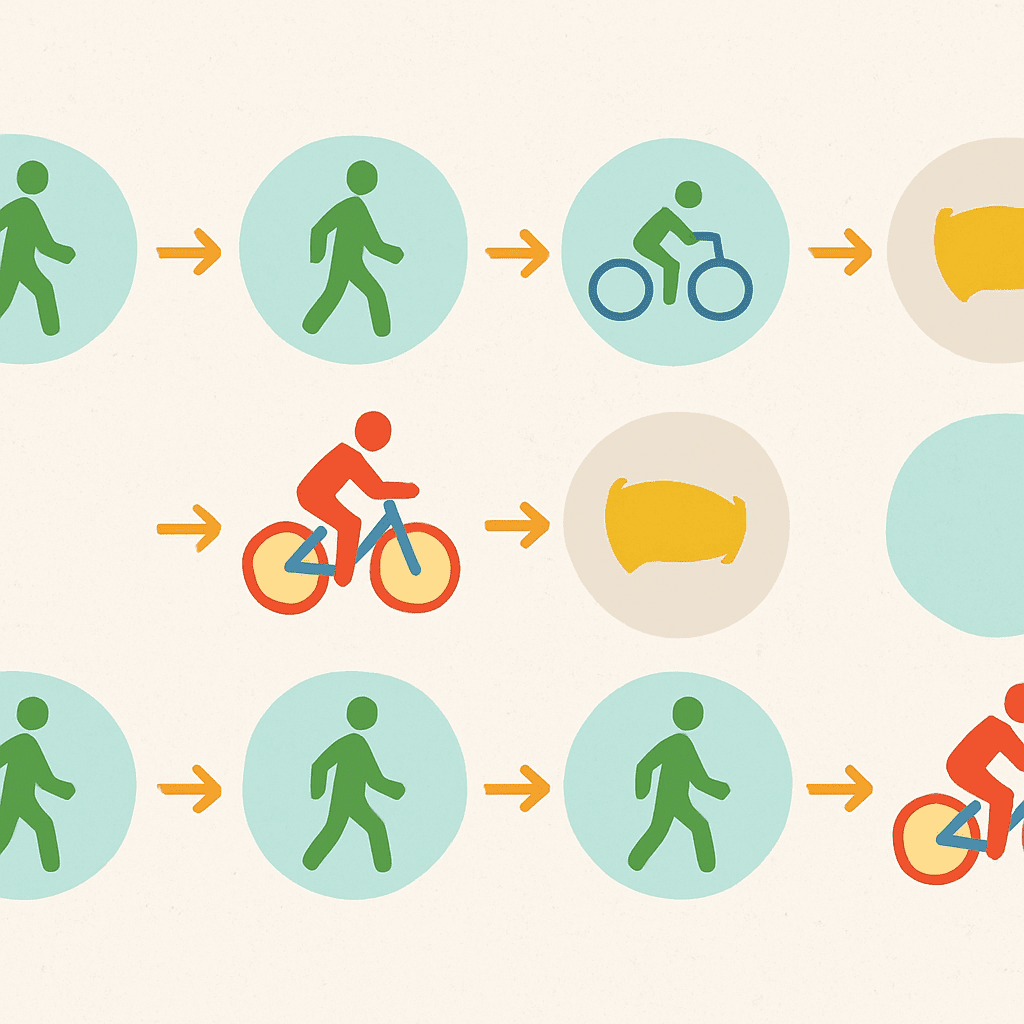Getting started with cardio training doesn’t have to be intimidating. Whether you’re a complete beginner or returning after a long break, building a strong foundation for cardiovascular health can be both accessible and enjoyable. Many people wonder how to start cardio training safely without overexerting themselves or risking injury. This article offers a comprehensive, evidence-based approach to cardio training for beginners, guiding you through safe, effective steps that can help you improve cardio fitness in 2 weeks. With the right mindset, method, and routine, even those who feel out of shape can gain confidence and cardiovascular strength in a short period of time.
You may also like: Smart Nutrition Choices for a Healthier Lifestyle: What to Know About Whole Grain Rice and Whole Wheat Rice

Laying the Groundwork: Why Cardio Matters for Your Health and Endurance
Cardio, or aerobic exercise, is a cornerstone of physical fitness and long-term health. It strengthens the heart, improves lung capacity, increases stamina, supports fat metabolism, and contributes to better mental health. From walking and cycling to swimming and dancing, cardiovascular activity is essential for enhancing energy levels, reducing stress, and lowering the risk of chronic diseases. For beginners, the challenge often lies not in recognizing the benefits but in figuring out how to start cardio when out of shape.
The best cardio for beginners is not necessarily the most intense but rather the most sustainable. Understanding that cardio fitness improves over time through repetition, adaptation, and recovery allows you to build a plan that prioritizes health and gradual progress. Your heart becomes more efficient, your circulation improves, and your body learns to use oxygen more effectively. This isn’t just theory—research has consistently shown that even modest amounts of regular aerobic exercise can yield dramatic health improvements, especially when paired with consistency and proper pacing.

How to Start Cardio When Out of Shape: A Gentle, Progressive Approach
If you’re wondering how to start cardio training after being sedentary, the answer lies in slow, structured movement. Many beginners believe they need to dive into high-impact routines to see results, but this often leads to frustration or injury. Instead, starting with the easiest cardio options—like walking or cycling—helps develop your aerobic base without overwhelming your system. Walking briskly for 15 to 20 minutes a day, five times a week, can be enough to spark noticeable improvements in cardiovascular function.
When developing a cardio routine for beginners, remember that consistency outweighs intensity. Even short sessions can be highly effective when done regularly. If walking feels too easy, consider incorporating intervals of increased speed or uphill movement. The goal is to challenge yourself just enough to stimulate adaptation without feeling burnt out. If you’re asking how to get into cardio safely, this slow-burn method ensures your body is building strength without unnecessary strain.

Beginner Cardio Workout at Home: Creating an Effective Plan Without a Gym
You don’t need access to a gym to improve cardio fitness in 2 weeks. A beginner cardio workout at home can be just as effective as a gym-based regimen when designed thoughtfully. Activities such as stair climbing, marching in place, jumping jacks, or low-impact dance workouts provide powerful cardiovascular benefits without the need for equipment. What matters most is elevating your heart rate consistently and giving your body a chance to adapt over time.
Time-based routines are an excellent way to structure a cardio program for beginners. For example, you might alternate 30 seconds of activity with 30 seconds of rest for a total of 15 to 20 minutes. You can start with one or two exercises—like step-ups and high knees—and gradually build complexity as your fitness improves. This form of interval training is approachable, flexible, and easily customized. It’s also one of the best ways to build discipline and monitor progress in a low-pressure environment.

Choosing the Best Cardio Exercises for Beginners at the Gym
For those who prefer a structured setting or thrive with equipment, the gym offers an excellent environment for cardiovascular development. The treadmill, stationary bike, elliptical machine, and rowing machine are among the best cardio exercises for beginners. Each allows you to control intensity and duration with precision while offering low-impact options that protect your joints. A gym beginner cardio workout can be a great way to boost motivation through accountability and access to professional guidance.
The treadmill, in particular, offers flexible programming. You can start with a flat surface walk and gradually increase the incline or speed. The elliptical provides a full-body, joint-friendly experience, while the rowing machine builds both endurance and strength. As your comfort level grows, rotating between different machines helps target different muscle groups and keeps things interesting. The key to a successful cardio gym workout plan for beginners is starting with manageable goals and gradually increasing difficulty.

Designing a Sustainable Cardio Training Program for Beginners
Building a cardio regimen for beginners that actually lasts requires thoughtful planning. Rather than chasing fast results, focus on forming a routine that integrates seamlessly into your lifestyle. Set clear, attainable goals—such as completing three 20-minute sessions per week—and increase them only when it feels natural to do so. This approach not only reduces the risk of injury but also supports long-term habit formation.
When constructing a cardio training program for beginners, include variation to maintain interest and challenge your body in new ways. Alternate between activities like walking, biking, and light jogging to keep things fresh. Don’t be afraid to repeat workouts that feel good—repetition fosters mastery and builds endurance. Over time, your cardio routine for beginners can evolve into a more advanced plan as your stamina, strength, and confidence grow.
How Do You Add Cardio to Your Routine Without Disruption?
One of the most common questions among beginners is how do you add cardio to your routine without disrupting your schedule or overwhelming yourself? The key is to start with short, focused sessions that can be integrated into your daily life. For example, you can do a 15-minute walk during your lunch break, a quick jog before dinner, or a short stair session at home while watching your favorite show.
Treat cardio as a natural extension of your daily rhythm rather than an isolated task. If mornings work better for your energy levels, use that window to get your movement in. If evenings are more peaceful, schedule your session as a way to wind down. When you view cardio as a lifestyle habit rather than a fitness chore, it becomes easier to stay consistent.
The Easiest Cardio Workouts That Build Confidence and Endurance
For those just getting started, choosing the easiest cardio exercises can help build a foundation of success and confidence. Walking remains the gold standard for beginner cardio—it’s safe, effective, and scalable. Other easy cardio options include cycling, swimming, and elliptical workouts. These activities are gentle on the joints and allow you to control your pace while steadily improving cardiovascular performance.
What makes an exercise “easy” isn’t just physical demand—it’s how accessible and repeatable it feels. A good cardio for beginners is something you can do multiple times a week without dreading it. This reduces the likelihood of skipping sessions and increases the odds of forming a lasting habit. Easy cardio doesn’t mean ineffective. It simply means you’re working at a level that matches your current capacity, allowing for sustainable progress over time.

Avoiding Common Pitfalls in a Cardio Plan for Beginners
While starting cardio can be exciting, it’s important to avoid common mistakes that derail progress. Overtraining is one of the biggest pitfalls. Enthusiasm often leads beginners to push too hard, too soon, which can result in soreness, burnout, or injury. Respect your body’s limits and build gradually. The best cardio workout for beginners includes rest days and varied intensity to support adaptation.
Another issue is monotony. Repeating the same workout can cause both physical plateaus and mental fatigue. Adding variety keeps things engaging and stimulates different muscle groups. Use music, explore new routes, or invite a workout buddy to keep your sessions enjoyable. Finally, avoid perfectionism. Progress isn’t linear, and missing a session doesn’t mean failure. What matters most is the commitment to continue.
Improving Cardio Fitness in 2 Weeks: Is It Possible?
Yes, you can improve cardio fitness in 2 weeks—if you approach it with realistic goals and consistent effort. Two weeks is enough time to build momentum, experience increased energy levels, and lay the groundwork for future gains. Your resting heart rate may begin to lower, recovery times may improve, and your endurance may noticeably increase. These early improvements can be highly motivating and reinforce your decision to stick with a cardio regimen.
Start with five sessions per week of low-to-moderate intensity cardio. Aim for 20 to 30 minutes per session, alternating between steady-state activities and light intervals. Pay attention to how your body feels, stay hydrated, and prioritize sleep. Recovery is essential to improving cardiovascular performance. With thoughtful planning, even a short period like two weeks can produce measurable health benefits and inspire long-term commitment.

The Mental and Emotional Impact of Cardio for Beginners
The benefits of cardio extend far beyond the physical. Engaging in a cardio routine for beginners can dramatically impact mental and emotional health. Regular aerobic activity is associated with reduced anxiety, improved mood, and better sleep quality. The act of moving your body can serve as a form of meditation, helping you process stress and reset your mind.
In addition to neurochemical benefits, cardio builds discipline and resilience. Each completed workout is a psychological win that reinforces your self-confidence. When you follow through on your cardio training program for beginners, you demonstrate to yourself that change is possible. Over time, this mindset shift can spill into other areas of life—career, relationships, and self-care—making you feel more empowered and capable overall.
Frequently Asked Questions (FAQ): Cardio Training for Beginners
1. What’s the most effective way to improve cardio fitness in 2 weeks without overtraining? To improve cardio fitness in 2 weeks effectively, focus on moderate, consistent sessions that balance effort with recovery. Choose low-impact activities like brisk walking, elliptical workouts, or swimming to minimize joint stress while keeping your heart rate in the aerobic zone. Alternate between steady-state workouts and short intervals to condition both endurance and cardiovascular capacity. A cardio training program for beginners should include at least five 20- to 30-minute sessions weekly, with one or two rest days for adaptation. You’ll notice improved energy, reduced shortness of breath, and lower resting heart rate within this short timeframe when your cardio regimen for beginners is smartly paced.
2. How do you start cardio if you’re nervous about joining a gym or public class? Understanding how to start cardio when out of shape includes accounting for emotional comfort as well as physical readiness. A beginner cardio workout at home is a great starting point because it allows you to build confidence in a familiar environment. Use simple tools like a jump rope, yoga mat, or even household steps to create an effective cardio exercise plan for beginners. Streaming beginner-friendly workouts online or following structured apps can help you maintain consistency without the pressure of public spaces. Over time, these at-home routines can serve as a bridge to more social settings like a gym or outdoor class.
3. What’s the difference between a cardio plan for beginners and one for experienced athletes? A cardio plan for beginners emphasizes foundational movement, gradual intensity increase, and learning how to listen to the body. The focus is less on performance metrics and more on building tolerance and endurance without injury. In contrast, seasoned athletes often follow a cardio training program with periodized intervals, lactate threshold training, or zone-specific heart rate goals. If you’re learning how to get into cardio, your initial emphasis should be on form, frequency, and recovery. Good cardio for beginners focuses on developing habits before advancing to complex protocols.
4. Can I still benefit from cardio if I only have 10–15 minutes per day? Absolutely. The best cardio plan for beginners doesn’t require hours of commitment—just consistency and effort. Short, high-efficiency sessions like 10 minutes of jumping jacks, stairs, or shadowboxing can meaningfully elevate your heart rate. A structured, time-efficient cardio routine for beginners is especially helpful for those with busy schedules. What matters most is raising your heart rate and sustaining it, even briefly, to build cardiovascular strength over time. Repeating these short sessions daily can produce cumulative gains that improve cardio fitness in 2 weeks.
5. How do you add cardio to your routine without interfering with strength training or recovery? When deciding how to do you add cardio to your routine alongside other training modalities, timing and intensity matter. If your primary focus is strength, consider low-impact cardio like walking or cycling on off days. If you’re building an all-around fitness base, alternate between strength and beginner cardio workout days, allowing at least one full rest day per week. Integrated movement—like using active recovery circuits between lifts—can also double as easy cardio for beginners. Listen to your recovery cues, including soreness, fatigue, or sleep quality, to adjust your cardio program for beginners accordingly.
6. What are overlooked cardio exercises for beginners at gym settings? Many beginners focus solely on treadmills or bikes, but several underutilized machines can offer significant benefits. The rowing machine, for example, provides full-body engagement with minimal impact, making it one of the best cardio exercises for beginners in a gym setting. Stair climbers and ski ergometers also support total-body movement while improving endurance. Even walking lunges across a gym floor can double as both strength and cardio when performed continuously. Diversifying your cardio gym plan for beginners enhances muscle balance, prevents overuse injuries, and keeps workouts engaging.
7. How can someone stay motivated during a starting cardio workout phase? Building mental momentum is as important as the physical training itself, especially when starting cardio workouts. Set mini-goals tied to consistency rather than performance, like completing five sessions a week. Music, podcasts, or fitness trackers can help enhance engagement and provide feedback loops that reinforce progress. Another tip is to schedule your beginner cardio workout as a non-negotiable part of your daily calendar. Treating your cardio training for beginners like a meeting with yourself builds accountability and habit strength over time.
8. What role does heart rate monitoring play in a beginner’s cardio routine? While not essential, heart rate monitoring adds precision and safety to any cardio training program for beginners. It helps ensure you stay within your target aerobic zone, generally 50–70% of your max heart rate, which optimizes fat burning and endurance without overtraining. Devices like chest straps or fitness watches can guide your session intensity in real-time. As you improve cardio fitness in 2 weeks or more, you’ll see your resting heart rate decline—a clear sign of improved conditioning. Monitoring also teaches you how to start cardio training with awareness, adjusting based on energy, hydration, and stress levels.
9. How should beginners modify cardio when recovering from injury or illness? Returning to exercise post-injury or illness requires a cautious, modified approach. Starting cardio workout sessions should begin with shorter durations and lower impact—walking, recumbent biking, or aqua aerobics are ideal. A good cardio for beginners in this context avoids jumping or prolonged joint load and emphasizes range of motion and circulation. Clearance from a healthcare provider is essential, especially for those recovering from respiratory or cardiac conditions. Gradually increasing effort based on symptom tracking can safely reintegrate cardio into your routine while preserving gains.
10. What long-term strategies help maintain a beginner cardio workout after the initial two weeks? After the initial excitement fades, the challenge becomes sustainability. Transitioning from a 2-week challenge to a lifestyle requires variety, goal setting, and internal motivation. Try rotating between different formats—like a gym beginner cardio workout one day and a hike or dance class another. Keep refining your cardio exercise plan for beginners based on your evolving preferences and life schedule. Incorporating social accountability, such as workout partners or digital groups, can turn your cardio regimen for beginners into a lasting, enjoyable habit. With time, these routines not only support cardiovascular health but become a core part of your identity and daily rhythm.
Conclusion: How to Improve Cardio Fitness in 2 Weeks Safely and Sustainably
Improving cardio fitness in 2 weeks is a realistic and rewarding goal for beginners when approached with patience, structure, and consistency. By choosing the best cardio plan for beginners based on your individual needs and preferences, you can build a routine that supports both short-term progress and long-term health. Whether you’re starting with the easiest cardio workouts at home or engaging in a gym beginner cardio workout, the principles remain the same: start slow, be consistent, and listen to your body.
Cardio for beginners is not about perfection. It’s about creating a foundation—physically, mentally, and emotionally—that sets you up for a healthier, more active future. Every session, no matter how small, contributes to improved endurance, heart health, and self-confidence. By following a thoughtful cardio training program for beginners, you not only improve your stamina and energy levels but also build a habit that can transform your life.
So if you’re ready to start, begin with something simple. Take a walk. Try a beginner cardio workout at home. Schedule your first gym session. However you begin, what matters most is that you do. Two weeks from now, your heart, lungs, and mind will thank you—and you’ll be well on your way to a more vibrant, energized lifestyle.
Was this article helpful? Don’t let it stop with you. Share it right now with someone who needs to see it—whether it’s a friend, a colleague, or your whole network. And if staying ahead on this topic matters to you, subscribe to this publication for the most up-to-date information. You’ll get the latest insights delivered straight to you—no searching, no missing out.
Further Reading:
How Beginners Can Get Started With Cardio
19 Cardio Exercises You Can Do at Home
20 cardio exercises to do at home with minimal equipment, from beginner to advanced

